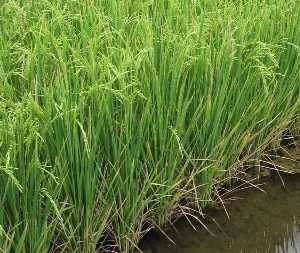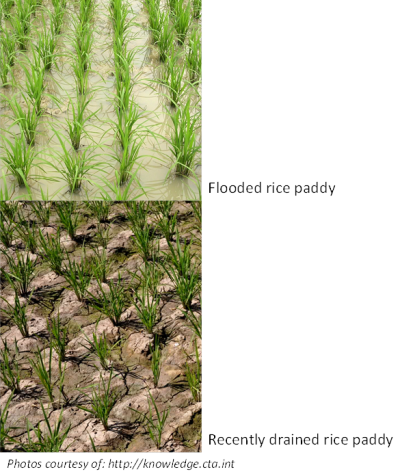Effects of improved water management on C, N cycling and greenhouse gas emissions in rice systems
Rice Facts
- Worldwide, rice is the most widely consumed grain and it is the major food source for more than half of the world’s population.
- Rice production is particularly water intensive. Seventy five percent of the world’s rice is produced on irrigated land.
- As demand increases and the climate changes, access to stable and fresh water supplies are becoming less reliable.

Challenges for improving rice water management
It is imperative that we develop agricultural practices that use water more efficiently. Recent work in rice systems has shown the potential for alternative irrigation practices that rely on partial seasonal flooding or an alternation of wet-dry cycles. However, management practices that use less water present a number of challenges:
- Potential yield penalties
- Knowledge gaps and cultural/infrastructural paradigms
- Changes in carbon and nitrogen cycling
- Potential increases in soil greenhouse gas emissions (GHGs); nitrous oxide (N2O) and methane (N2O)
Research Objectives
In this project we are focusing on the latter two challenges. We are investigating how water management and soil mineralogy interact to control changes in soil redox potential and then how soil redox potential subsequently affects C and N cycling, CH4 and N2O emissions. We are using a range of analyses across multiple scales (lab, greenhouse, and field) to investigate interactions between C and N at various stages of paddy flooding and drainage. Our focus is to investigate some of the main bottlenecks in our mechanistic understanding of coupled C and N cycling and to help clarify how these mechanisms change in time space as redox potentials change.
Our major research foci are:
- Characterization of redox changes at multiple depths following paddy flooding and drainage
- Quantification of CH4 and N2O emissions following paddy flooding and drainage
- Use of stable-isotope techniques to determine balance between CH4 production (methanogenesis) and consumption (oxidation) at various flooding/drainage stages.
- Use of stable-isotope techniques to source partition nitrification and denitrification derived N2O emissions at various flooding/drainage stages and N2O:N2 ratios.
- Use of isotopic signatures to create a depth profile of CH4 and N2O concentrations and their contribution to total gas efflux
- Determination of fixed-NH4+ release and contribution to crop season N cycling and N2O emission
- Characterization of methanotropic community through qPCR and T-RFLP analyses
- Integration of new mechanistic understanding in DNDC (DeNitrification-DeComposition) model for rice systems (i.e. accommodation of additional depth parameters of varying aerobicity)
This work is part of a collaborative project with Ghent University, University of Turin, and the University of New Hampshire and is funded by FACCEJPI.
For more information please contact: Johan Six ().


